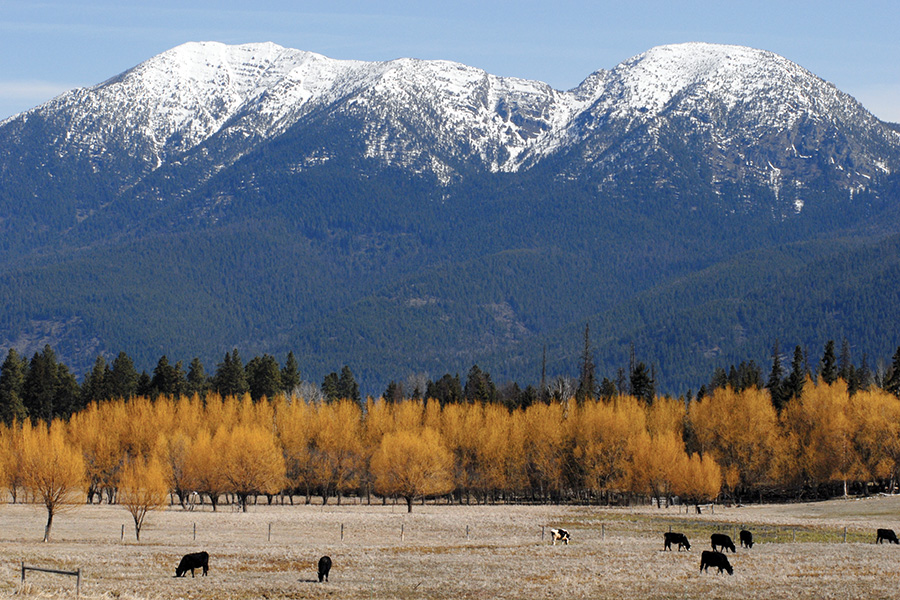After 13 years of banning U.S. beef, China has reopened its markets to the red meat, providing what American leaders are calling an important opportunity for the cattle industry, especially in Montana, where cows outnumber humans two to one.
“China is the world’s second-largest beef market. After my two official trade missions to Beijing, including pressing the Chinese Premier and endless conversations with the Trump and Obama administrations — the ban is over,” Montana U.S. Sen. Steve Daines said in a prepared statement. “Montanans know U.S. beef is the highest quality in the world and now our producers can compete on a level playing field. On my next trip to Beijing I look forward to seeing Montana beef on the menu.”
While in China in April, Daines hand-carried and delivered four Montana steaks to China Premier Li Kequiang. The measure reopening the markets is set to take effect in July.
But while the chance to feed the 1.4 billion people living in China has major potential, for many Montana cattle ranchers it brings up a sticking point about infrastructure, value-added products and being able to name a steak “made in Montana.”
“A good majority of the cattle that leave Montana and are fed and processed in the Midwest are more than likely going to be exported to either Japan, Korea or now China,” said Errol Rice, executive vice president of the Montana Stockgrowers Association. “Unfortunately, Montana does not have a large feeding or processing infrastructure. About a million calves a year will go to states like Nebraska.”
Without the feeding or processing infrastructure able to handle such capacity, the calves that would sell overseas as Montana beef are instead products of the Midwest by the time they get there, Rice said. By processing the meat here, it could be labeled as made in Montana, which would drive the value-added market.
“They’ll be fed there and processed (in a different state) and exported,” Rice said. “Then it’s not considered Montana beef.”
Montana U.S. Sen. Jon Tester, a Democrat, said the opportunity in China is huge. But as someone who grew up with parents who butchered professionally and then moved into that career for a while himself, Tester said the lack of infrastructure in Montana has been a sticking point for years.
“There’s an incredible demand out there for a meat-processing facility,” Tester said in an interview with the Beacon last week. “If ever built in Montana, it would allow for many of these calves that are shipped to the Midwest to be fed and harvested here.”
According to the U.S. Department of Agriculture, Montana produced a total of 2.65 million cattle and calves in 2016, up from 2.5 million in 2015. In Flathead County, which ranked 52nd out of the state’s 56 counties for cattle production, there were about 8,500 cattle and calves in 2016, up from 8,000 in 2015.
Ranchers, particularly those running cow-calf operations, have been hit with low cattle prices in recent years. Fed cattle prices hit a high of $170 per cwt, then dropped to $98 by fall of 2016. Prices in 2017 are expected to average out at about $110, according to CattleFax.
Tester said he thought the major processing plants that have consolidated in recent years to the Midwest would fit right in in Montana, especially because of the amount of product available and the climate.
“We have some of the best genetics in our cattle in the state of Montana, not just in the U.S. but in the world,” Tester said. “Winters are not as cold as they used to be, and we can feed them here more efficiently than in the Midwest because it doesn’t get as hot.”
“If we could do that, with a packing plant, with the genetics,” he added, “we could really add value to our livestock, whether it be beef or pork or whatever.”
A major processing plant would be a private-sector endeavor, but Tester said there are rural-development loans and small-business loans in federal programs that could help. But those programs are currently in peril under President Donald Trump’s proposed budget, which would pull billions in funding from the USDA, including deep cuts to rural-development programs.
Rice, of the state stockgrowers association, said this type of infrastructure is “something we’ve been focused on and working on,” and there is a desire in the state to entice private businesses, such as creating attractive tax incentives or environmental regulatory policies.
“That’s something that the industry in Montana is thinking critically about, about how to develop more infrastructure in our state,” Rice said. “The China opportunity creates some opportunities to do that and drive some direct investment into more process capacity and feeding capacity.”
Tester said another potential roadblock would be finding the workforce to sustain such an endeavor, because “it’s hard work.” But overall, a major processing plant in Montana is an idea that he’s thought about since he was a young man.
“I would be the first to sign up for that. I think you could make a good living at this. The problem is the consolidation of the marketplace,” Tester said. “I really think that there’s opportunity here, and I’ve thought it since I was young. We’ve got so many things going for us, and all it’s going to take is some entrepreneur who has a vision.”
